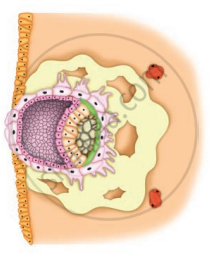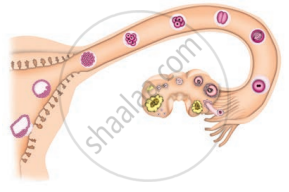Advertisements
Advertisements
प्रश्न
Explain heterostyly and herkogamy with suitable example.
उत्तर
- Heterostyly (heteromorphy):
Plants like Primula (Primrose) produce two or three types of flowers in which stigmas and anthers are placed at different levels (heterostyly and heteroanthy). This prevents the pollens from reaching the stigma and pollinating it. In heteromorphic flowers, pollen grains produced from anther pollinate stigmas produced at the same level. Thus self-pollination is not possible in such cases. - Herkogamy:
It is a mechanical device to prevent self-pollination in a bisexual flower. In plants, a natural physical barrier is present between two sex organs and avoid contact of pollen with the stigma of the same flower, in e.g. Calotropis, pentangular stigma is positioned above the level of anthers (pollinia).
संबंधित प्रश्न
What is DNA copying?
State the importance of DNA copying.
Amoeba reproduces by budding.
Which type of reproduction :
involves gametes?
What is the basic difference between asexual reproduction and sexual reproduction?
What type of fertilisation takes place in fish?
What type of fertilisation takes place in birds?
Name the part of the cell where DNA is located?
Give reason for the following:
Vegetative propagation is practised for growing only some type of plants.
Explain the term Reproduction.
Multiple choice question.
Point out the odd one.
Draw a well labelled diagram of the monocot seed you have studied.
Write two types of reproduction in plants.
Planaria reproduces asexually by ______.
What will happen if you cut planaria into small fragments?
Name two organisms that reproduce through budding.
Assertion and Reason types of Question.
Assertion: In potatoes, shoot arises from eyes.
Reason: Eyes represent the buds.
Which of the following statements about reproduction in humans is correct?
Observe the following figures.
 |
 |
 |
|
| (a) | (b) | (c) | (d) |
- Identify the stages (a) to (d) in figure during development of human baby.
- Arrange the stages in correct sequence of development.
- Explain the development that takes place in any one stage.

